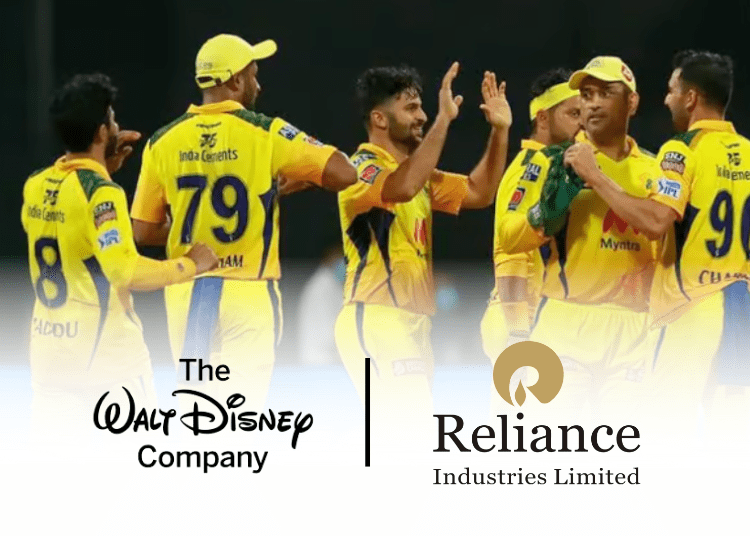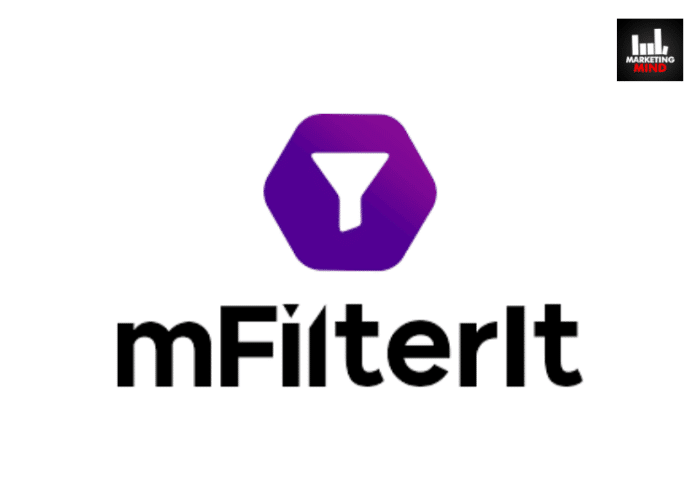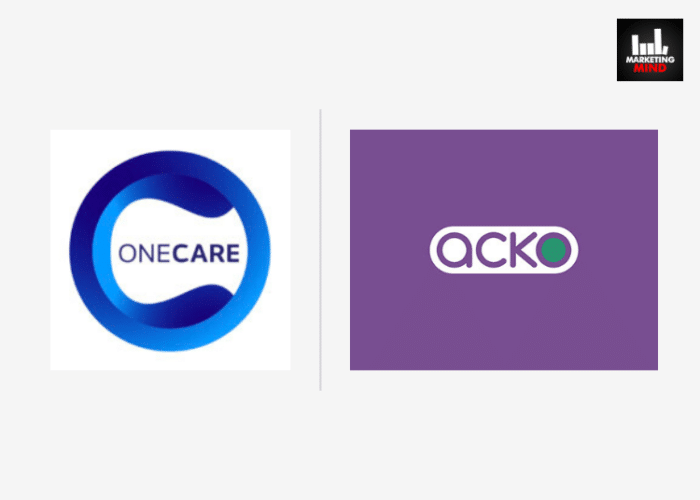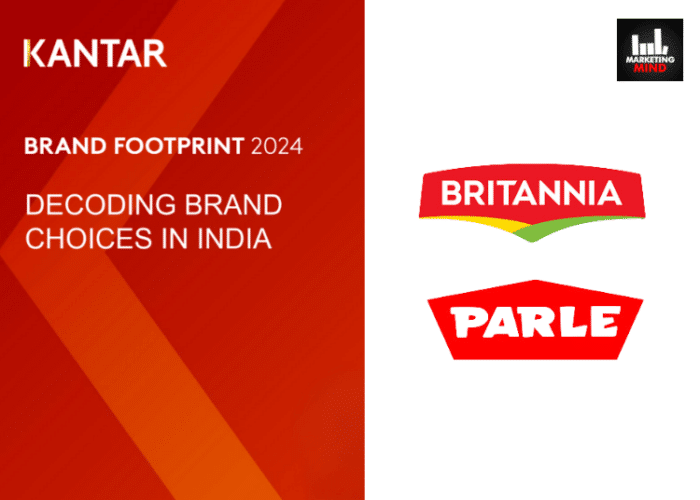In a country where cricket is not just a sport but a religion, the merger between Reliance Industries’ (RIL) Viacom18 and Walt Disney’s Star India marks a groundbreaking shift in the landscape of sports streaming and advertising in India. According to Karan Taurani, Senior Vice President – Research Analyst (Media, Consumer Discretionary & Internet) at Elara Capital, this union is poised to redefine the game’s digital viewership and advertising ecosystem.
With the promise of synergies between the two giants, the merger is set to capture a significant portion of advertisement revenues, particularly on connected television (CTV), leveraging cricket’s preference for the big screen, Taurani said.

In February, RIL, Viacom18 Media, and The Walt Disney Company announced their agreement to form a joint venture (JV) by signing binding definitive agreements. This venture will merge the operations of Viacom18 and Star India.
RIL agreed to invest Rs 11,500 crore (equivalent to $1.4 billion) at closing into the JV as part of its growth strategy. The transaction values the JV at Rs 70,352 crore (equivalent to $8.5 billion) on a post-money basis, excluding synergies. The JV will be controlled by RIL and will be owned 16.34% by RIL, 46.82% by Viacom18, and 36.84% by Disney.
However, some industry leaders believe that the changes to occur might require some time, as the agreement will need to pass the test of Competition Commission of India (CCI).
Before combining forces, the two companies were in an intense competition for cricket streaming rights. Securing the Indian Premier League (IPL) streaming rights, JioCinema, backed by Reliance, announced free streaming of the league last year. Similarly, Disney provided free streaming of the ICC World Cup 2023 through its mobile app.
Let’s explore further the impact of the Reliance-Disney merger on cricket streaming and advertising in India, what it means for advertisers, which entity will lead in cricket streaming, the merger’s impact on emerging sports, and more.
Reliance-Disney merger is a strategically sound decision
Taurani emphasised that the Reliance-Disney merger is a sound decision because digital businesses are making losses due to hefty content costs.
There will be a lot of synergies to explore here in both entities. One would be able to grow the revenue base and also lead to better advertising revenue because IPL is available on one single property or rather one single platform of both TV and digital. So, a better revenue scale means lower losses and better profitability for the company which is a major advantage, Taurani said.
Furthermore, this venture holds a significant advantage in terms of distribution. Jio boasts a vast customer base exceeding 500 million smartphone users, making it an ideal platform for delivering and distributing content seamlessly, he added.
Furthermore, Taurani said, “If you look at most of these players, the major drawback is that distribution costs experience a sharp fall because most of these companies, which are platforms, have to tie up with a third party, an original equipment manufacturer (OEM), or a telecom company, and the average revenue per user (ARPU) get converged very sharply. So, that is going to be a big benefit for Reliance and Disney because they possess a wide variety of content coupled with distribution advantages, enabling them to command higher ARPUs compared to tying up with any third-party player.”
What can the advertisers expect?
From an advertiser’s perspective, there won’t be a significant negative impact. While advertising prices may be high, it doesn’t mean only big advertisers will prevail, as both TV and digital mediums operate differently, Taurani said.
He also said that TV attracts many large advertisers including corporate advertisers. However, for those interested in including cricket in their advertising portfolio, digital platforms offer a viable option. This is because the costs per thousand impressions (CPMs) and ticket sizes are lower in the digital space.
Comparatively, digital advertising remains relatively inexpensive despite the substantial growth in reach and viewership. This makes it particularly appealing for smaller brands looking to advertise.
“The risk will be there, as the pricing is likely to increase due to substantial spending on content costs by these platforms. Consequently, they will aim to minimise losses. However, advertisers will still have the flexibility to advertise on both TV and digital platforms as per their preference. In essence, it will lead to a more equitable situation for both advertisers and platforms. With TV and digital advertising options available separately for IPL, advertisers enjoy a slightly stronger bargaining position compared to platforms,” Taurani added.
Reliance-Disney merger’s impact on the landscape of cricket streaming in India
Taurani highlighted that there is a big possibility for Reliance-Disney getting a large chunk of advertisement revenues on connected television (CTV) because cricket as a medium is preferred on the larger screen.
“If you look at the market, CTV ad spends are still very small. Moreover, the CTV household base is also small as of now. However, as the CTV household base expands, driven by increased broadband penetration and bundled offerings from players like Jio and Disney, you will see the growth of ad spans as well. Also, they would be keenly wanting to tap this market, potentially leading to a shift in advertising spending from linear TV to CTV platforms, where players like Jio and Disney can have a big edge,” Taurani said.
Furthermore, he went on to say that the merged company might still offer this cricket offering (IPL) for free. This implies more money for advertising, more viewers, and more consumption. If streaming becomes free in the future and the number of CTV users increases, there could be a significant shift from linear TV to CTV for cricket streaming.
Moreover, providing IPL for free would result in a significant increase in viewership numbers, as many individuals would access the content conveniently on their mobile phones. This approach would maximise reach and attract the largest customer base, leading to robust consumption metrics, he added.
Post-merger, which entity will emerge as the dominant force in cricket streaming?
A media analyst said, “The significant merger, with RIL having majority control, might result in the possible discontinuation of Disney Hotstar with its content smoothly merged into JioCinema.”
“Overall, Disney-Reliance will have an upper hand in cricket broadcasting – both on TV and digital platforms. Streaming cricket matches has been the main way to attract new users to streaming services in India. By acquiring many cricket rights, Disney and Reliance have given rival services fewer content choices to appeal to fans,” the media analyst added.
Striking a similar tone, Taurani said that considering the sports properties each possesses, such as IPL being divided between television and digital platforms, and the World Cup being under Disney’s control, they will be equally powerful and dominant in the realm of cricket.
“However, in terms of cricket streaming, particularly on the digital platform, JioCinema or broadly Reliance will have an advantage. This is because IPL contributes to over 70% of media ad spends on cricket. With JioCinema having the digital media rights for IPL, they will likely hold an edge over Disney in this aspect. However, overall, the benefits of this merger will be evenly distributed due to synergies between the two entities,” Taurani said.
“The revenues will increase, and the distribution and technology costs will be reduced. This will lead to a better user experience and the sharing of technology. Disney can enhance the user experience. Overall, these changes will be highly beneficial and mutually advantageous for both entities,” he added.
Taurani underscored that going forward, Reliance will get a chance to gain access to Disney Star’s content, and it holds significant importance.
“Currently, in the sports streaming domain, they exclusively stream IPL on JioCinema, which commands a substantial share in advertising revenue and consumption. Expanding their content library could potentially pave the way for a pay-based model, as IPL is currently offered for free. Although IPL attracts a wide audience, in the medium term, transitioning to a paid model could be strategically advantageous considering their diverse premium content offerings,” he said.
How can Disney regain the lost ground post merger?
According to Taurani, Disney will experience some relief following the merger. IPL being offered for free on the digital platform has led to substantial losses for Disney on TV, as viewership and ad revenue declined.
“With the merger, this trend may be halted, as the balance of bargaining power shifts slightly in favour of the platform rather than the advertiser. Currently, when IPL is available on both TV and digital platforms, advertisers have greater negotiating leverage, being able to choose between digital-only or TV advertising,” Taurani said.
“This will provide some relief for Disney’s efforts to regain lost ground. Additionally, Disney will gain a significant advantage from Reliance’s distribution expertise. They can collaborate with Jio, which may lead to higher ARPUs and an expansion of their subscriber base, especially since they lost 40% of their paid subscribers due to IPL,” he added.
Taurani also emphasised that we can expect an increase in ARPUs because the current ARPUs are relatively low. Currently, they have to partner with distributors, pay minimum guarantees, and distribution fees. However, with this merger, those costs will be eliminated, resulting in a stronger position for Disney. These strategies could help them regain some of the ground they have lost.
Merger’s impact on emerging sports in India
The 2024 Sporting Building Nation report by GroupM highlights that the total spends in the sports sector, encompassing sponsorships, endorsements, and media investments in 2023, reached Rs 15,766 crore. Of this amount, cricket accounted for 87% of the spending, while emerging sports made up the remaining 13%.
Taurani stated that emerging sports are poised for accelerated growth, with the merger set to usher in increased visibility for them. Notably, Star has been at the forefront of promoting sports like soccer, kabaddi, and badminton, and Jio stands to leverage this expertise to propel emerging sports to new heights.
He emphasised that all this content on emerging sports is now being provided for free, which could result in increased viewership and engagement, as previously this content was only available behind a paywall. While cricket is likely to maintain its dominance, emerging sports are expected to gain traction.
“Although they may not command higher media rights values due to cricket’s prevailing dominance, they can attract sponsorship revenues for platforms through title sponsorships. Certain emerging sports have strong brand recall in tier 2 and tier 3 markets, making them appealing to brands seeking lead sponsors or co-sponsorship opportunities,” Taurani said.
He added, “For small advertisers aiming to expand their reach across India, investing in emerging sports makes sense. The growth rates of emerging sports are projected to surpass those of cricket significantly. However, in terms of market share, the numbers are unlikely to shift substantially, as emerging sports currently represent a small fraction, accounting for no more than 6-7% of the total sports advertising share. Although the growth rate is anticipated to be higher, it’s not expected to result in a displacement of cricket’s dominance.”













